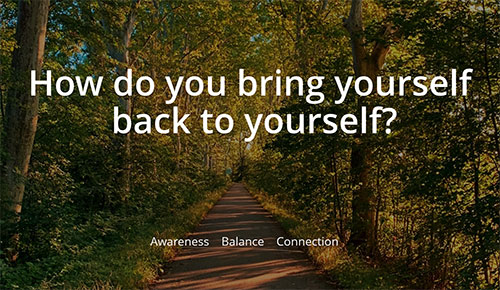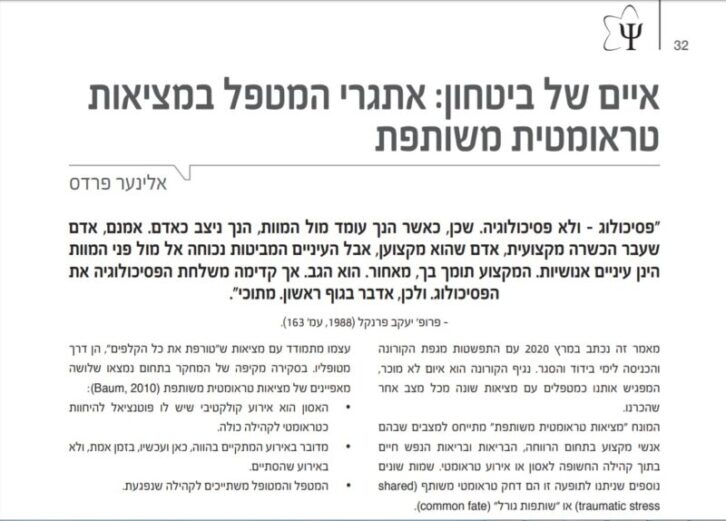
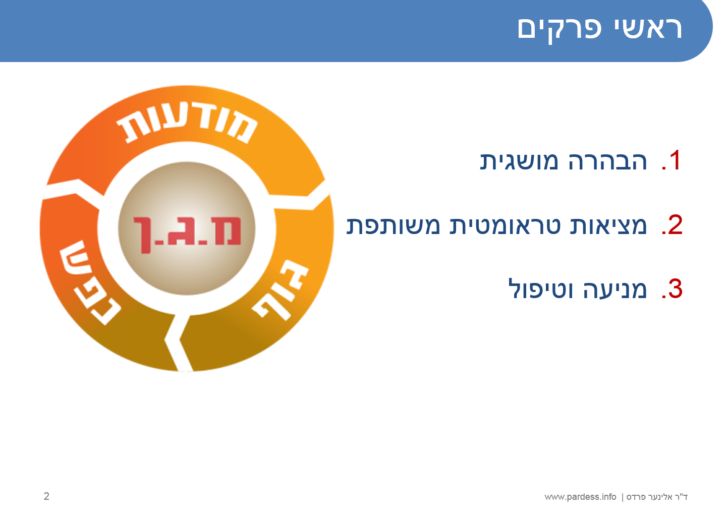
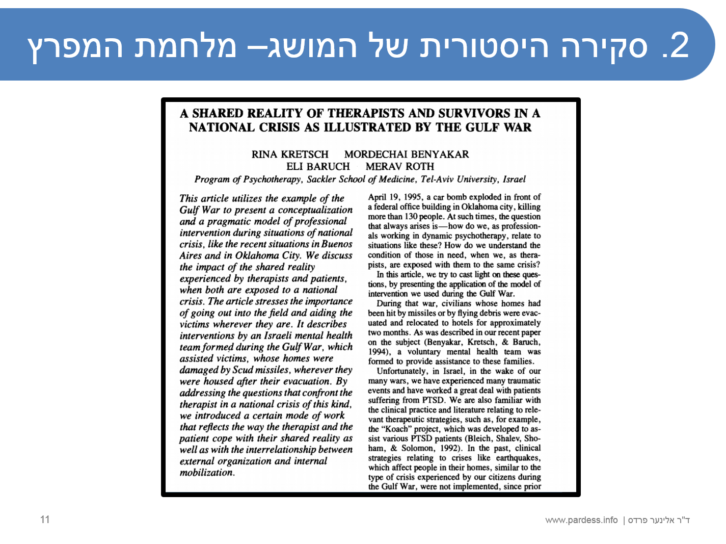
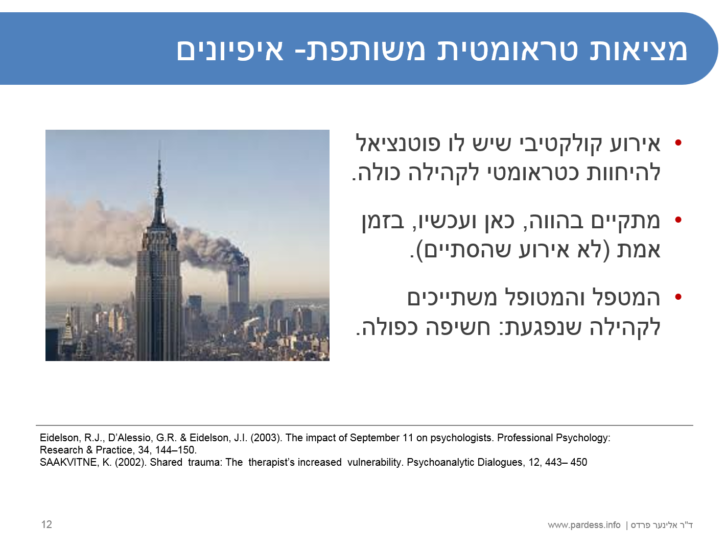
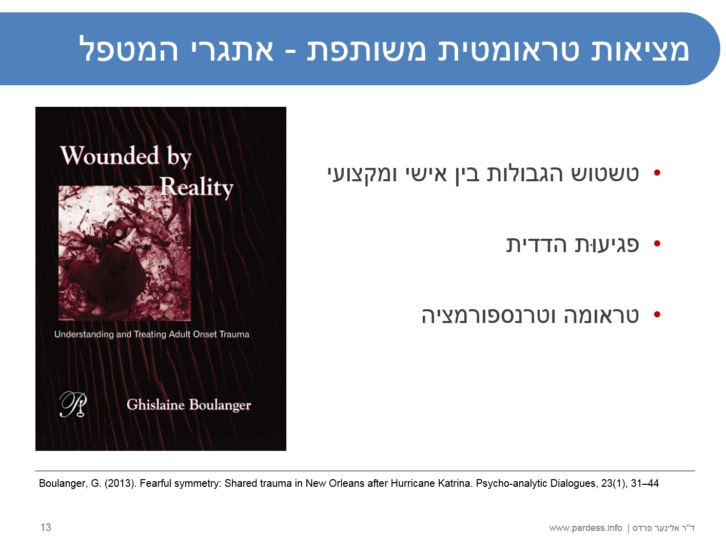
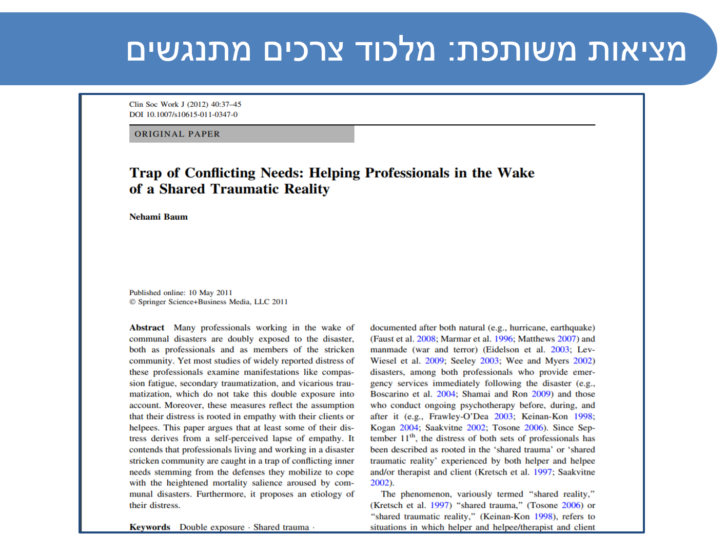
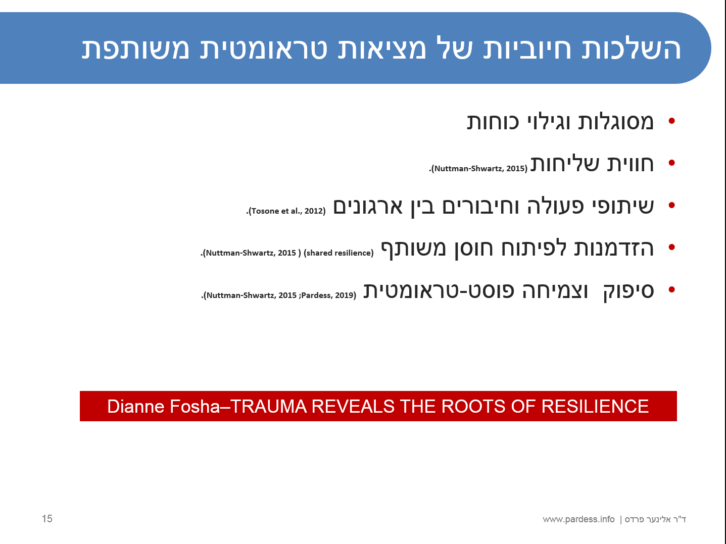
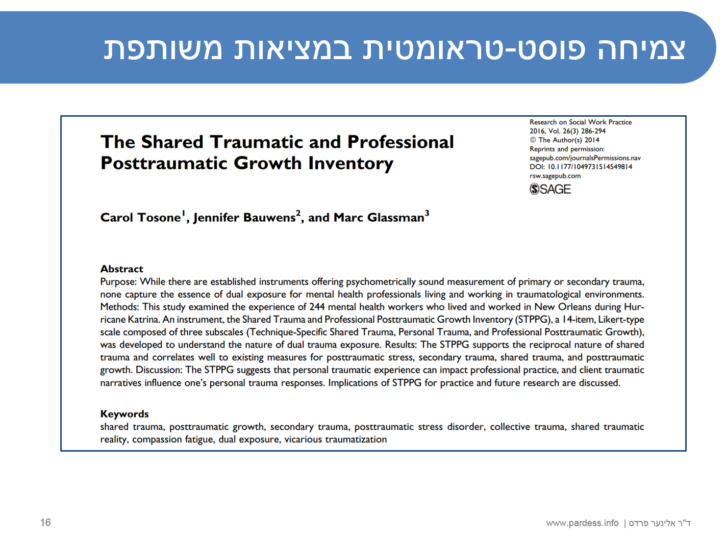
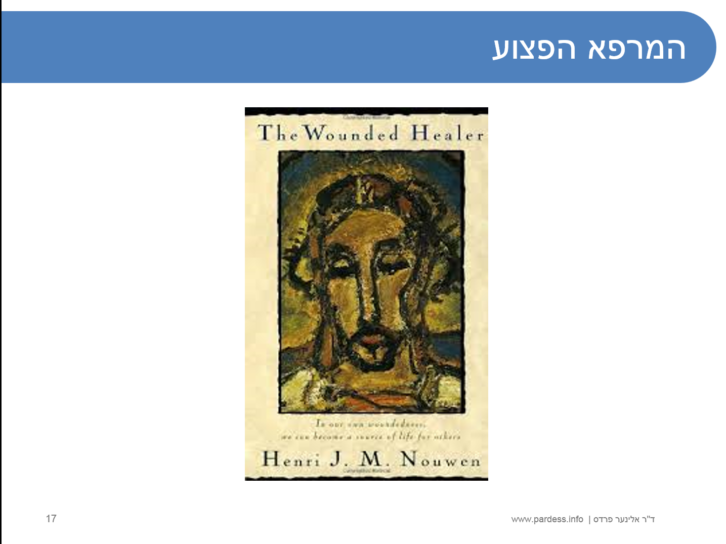
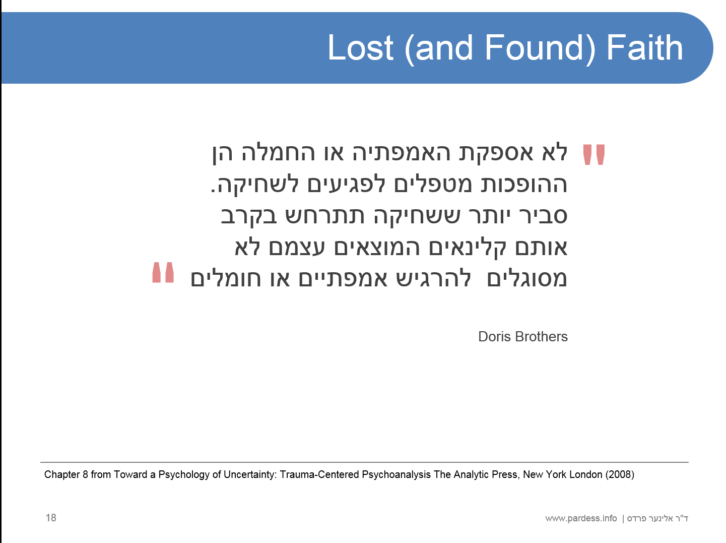
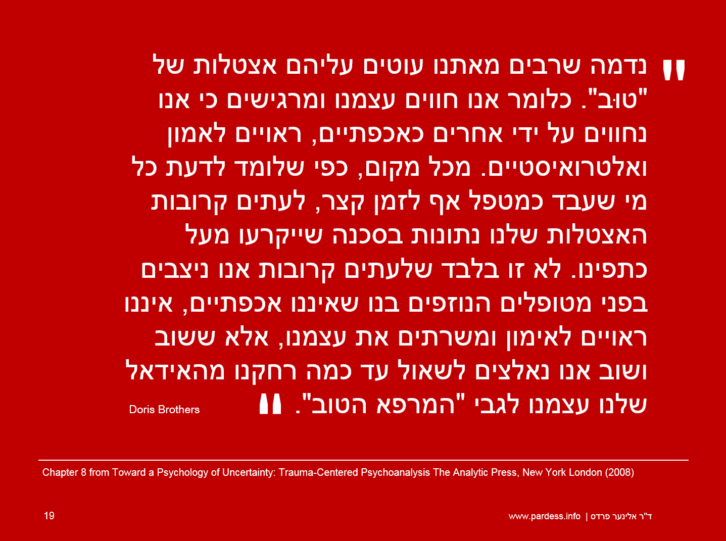
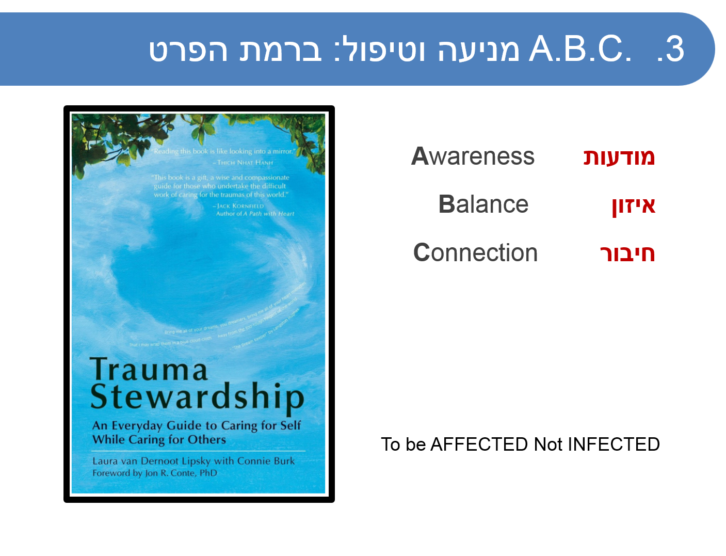
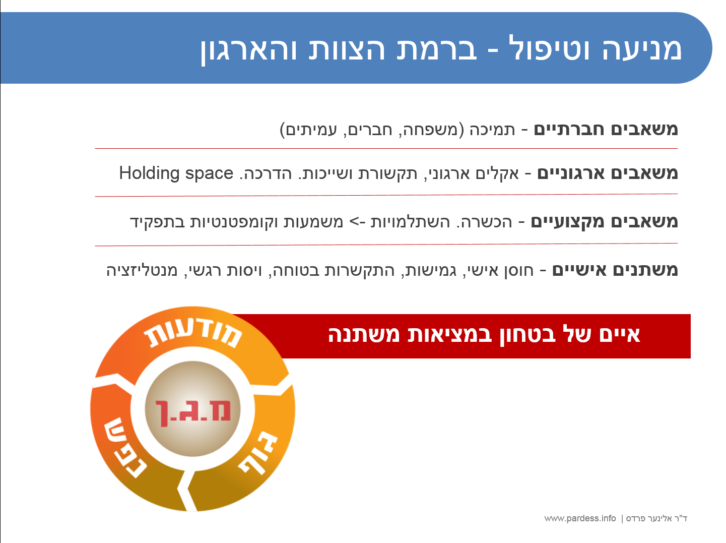
פרדס, א'. (2020) . איים של ביטחון – אתגרי המטפל במציאות טראומטית משותפת. פסיכואקטואליה
Ali, D. A., Figley, C. R., Tedeschi, R. G., Galarneau, D., & Amara, S. (2021). Shared trauma, resilience, and growth: A roadmap toward transcultural conceptualization. Psychological Trauma: Theory, Research, Practice, and Policy
Boasso, A., Overstreet, S., & Ruscher, J. B. (2015). Community Disasters and Shared Trauma: Implications of Listening to Co-Survivor Narratives. Journal of Loss and Trauma, 20(5), 397–409
Baum, N. (2014). Professionals’ double exposure in the shared traumatic reality of wartime: Contributions to professional growth and stress. British Journal of Social Work, 44(8), 2113–2134.
Bonanno, G. A. (2004). Loss, trauma, and human resilience: Have we underestimated the human capacity to thrive after extremely
aversive events? American Psychologist, 59(1), 20–28.
Boulanger, G. (2013). Fearful symmetry: Shared trauma in new orleans after Hurricane Katrina. Psychoanalytic Dialogues, 23(1), 31–44. https://doi.org/10.1080/10481885.2013.752700
Cartee, J. L. (2023). Kindness in shared trauma during times of crisis: breaking the barriers of resilience among faculty and students. Communication Education, 72(3), 305–310
Cohen, M., Gagin, R., & Peled-Avram, M. (2006). Multiple terrorist attacks: Compassion fatigue in Israeli social workers.Traumatology, 12(4), 293–301
Dekel, R. (2010). Mental Health Practitioners’ Experiences During the Shared Trauma of the Forced Relocation from Gush Katif.Clinical Social Work Journal, 38(4), 388–39
Figley, C. R. (2021). COVID pandemic: Answering the trauma questions. Traumatology, 27(1), 3–5.
Frazier, M. L., Fainshmidt, S., Klinger, R. L., Pezeshkan, A., & Vracheva, V. (2017). Psychological safety: A meta‐analytic review and extension. Personnel Psychology, 70(1), 113–165.
Halpern, J. (2016). Maintaining helper wellness and competence in a shared trauma reality.
Israel Journal of Health Policy Research, 5(1), 5–7.
Harris, B. T. (2016). Trauma and creative healing: Reflections on providing music therapy in post-war Bosnia and Herzegovina. Journal of Applied Arts & Health, 7(2), 253-261.
Lashko, O. (2023). View from Ukraine: Bearing witness under assault. Psychoanalysis, Self and Context, 18(3), 352–354.
McTighe, J. P., & Tosone, C. (2015). Narrative and meaning-making among Manhattan social workers in the wake of September 11,Social Work in Mental Health, 13(4), 299–317.
Nuttman-Shwartz, O. (2015). Shared resilience in a traumatic reality: A new concept for trauma workers
exposed personally and professionally to collective disaster. Trauma, Violence, & Abuse, 16(4), 466–475
Nuttman-Shwartz, O. (2023). The long-term effects of living in a shared and continuous traumatic reality:
The case of Israeli families on the border with Gaza. Trauma, Violence, & Abuse, 24(3), 1387–1404.
Pruginin, I., Findley, P., Isralowitz, R., & Reznik, A. (2017). Adaptation and resilience among clinicians under missile attack:
Shared traumatic reality. International Journal of Mental Health and Addiction, 15(3), 684–700.
Racanelli, C. (2005). Attachment and Compassion Fatigue Among American and Israeli Mental Health\ Clinicians Working With Traumatized Victims of Terrorism. International Journal of Emergency Mental Health, 7(2), 115–124.
Rao, N., & Mehra, A. (2015). Hurricane Sandy: Shared trauma and therapist self-disclosure. \Psychiatry: Interpersonal and Biological Processes, 78(1), 65–74.
Saakvitne, K. W. (2002). Shared trauma: The therapist's increased vulnerability. Psychoanalytic Dialogues, 12(3), 443–49.
Somer, E., Buchbinder, E., Peled-Avram, M., & Ben-Yizhack, Y. (2004). The Stress and Coping of \Israeli Emergency Room Social Workers Following Terrorist Attacks. Qualitative Health Research, 14(8), 1077–1093.
Strolin-Goltzman, J., Breslend, N., Hemenway Deaver, A., Wood, V., Woodside-Jiron, H., & Krompf, A. (2024).
Moving beyond self-care: Exploring the protective influence of interprofessional collaboration, leadership, and competency on secondary traumatic stress. Traumatology, 30(1), 69–76.
Tosone, C., McTighe, J. P., & Bauwens, J. (2015). Shared traumatic stress among social workers in the aftermath of Hurricane Katrina. British Journal of Social Work, 45(4), 1313–1329
Tosone, C., Nuttman-Shwartz, O., & Stephens, T. (2012). Shared trauma: When the professional is personal.Clinical Social Work Journal, 40(2), 231–239.
Tosone, C., Minami, T., Bettmann, J. E., & Jasperson, R. A. (2010). New York City social workers after 9/11:Their attachment, resiliency, and compassion fatigue. International Journal of Emergency Mental Health, 12(2), 103–116.
Tosone, C. (2006). Therapeutic intimacy: A post-9/11 perspective. Smith College Studies in Social Work, 76(4), 89-98.

כדי לאפשר צמיחה במציאות משותפת יש קודם כול לפנות מקום לכאב ולהכרה בעומק השבר במפגש עם המוות. בדידות במפגש עם המוות היא מצב קיומי, חוויה של היות אנושי. המפגש בעיניים נכוחות עם המוות ועם החיים מאפשר ליחיד לשמר, להרחיב ולהעמיק את אנושיותו

